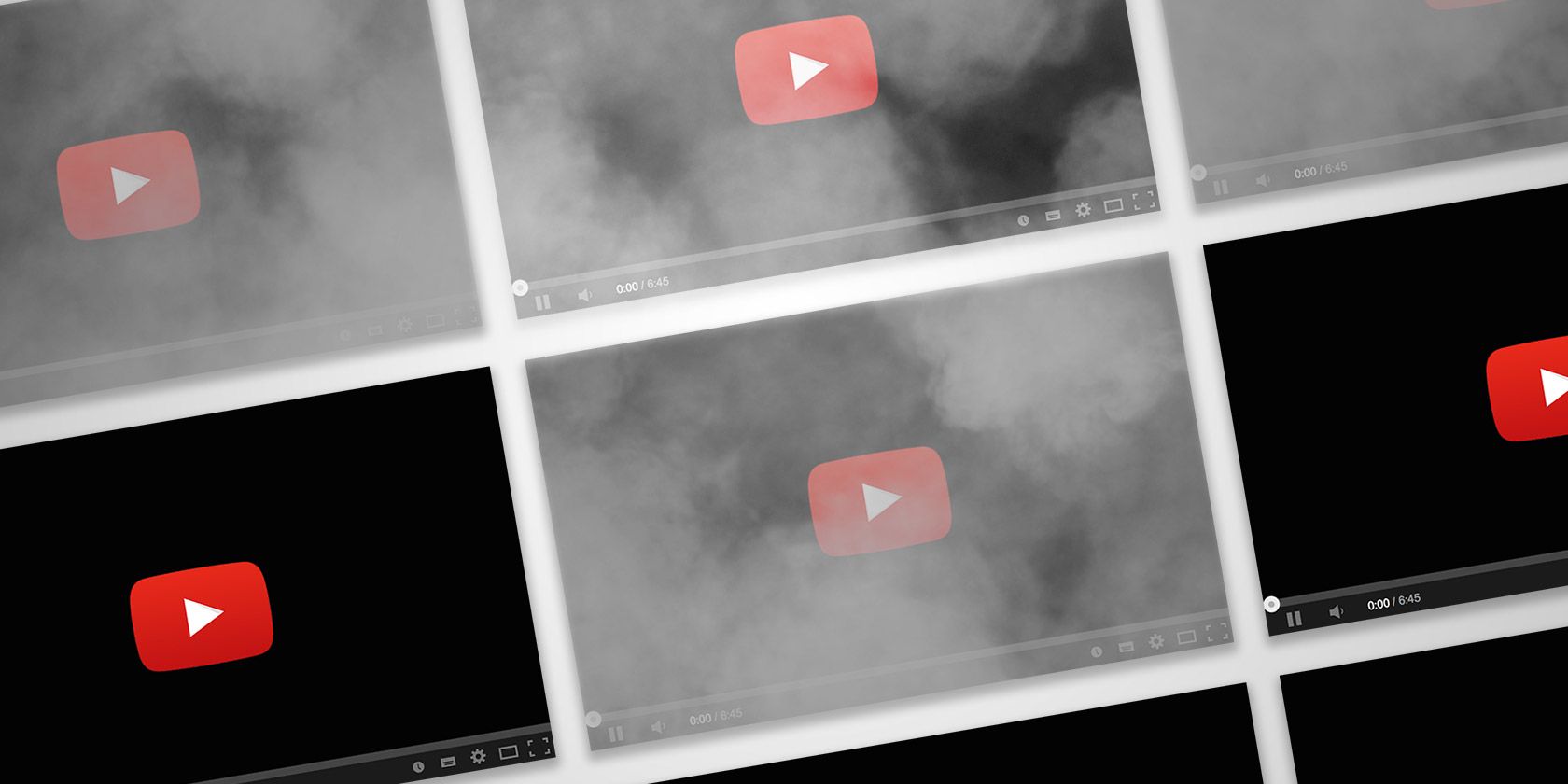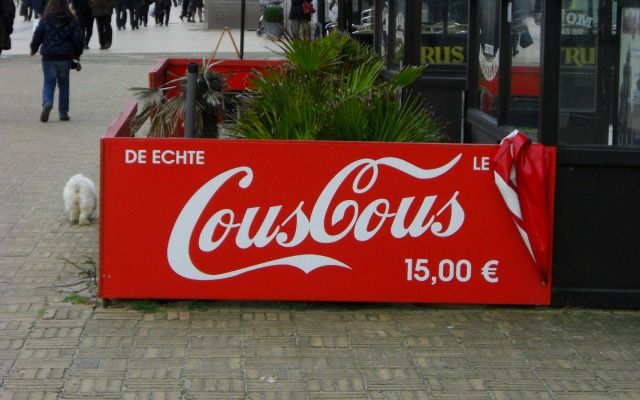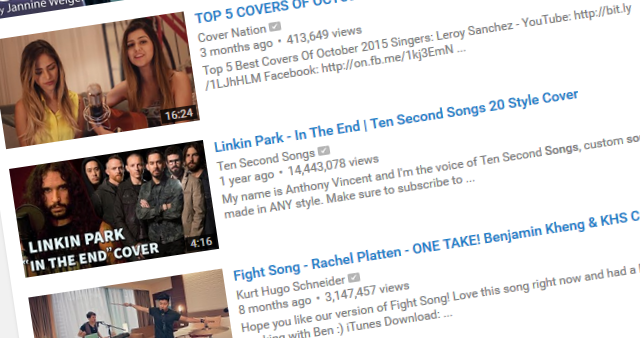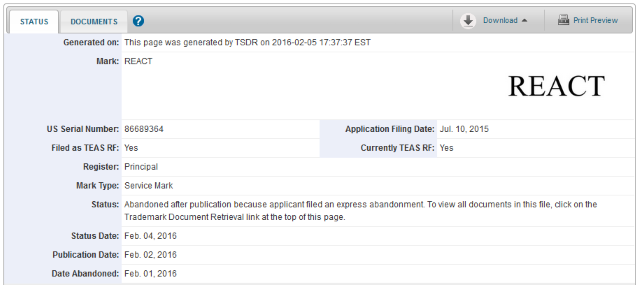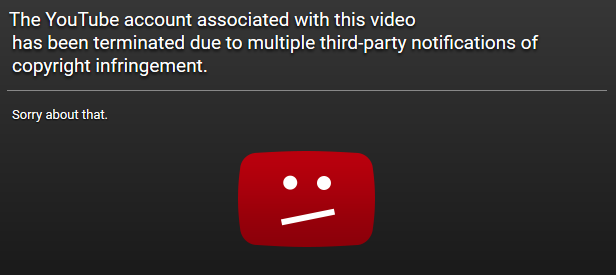YouTube is the most popular video platform in the world, but that doesn't make it exempt from intellectual property laws. In fact, with the spotlight on YouTube, it makes it even more vulnerable. This means that any video which infringes trademark or copyright laws can be removed from YouTube, often without warning.
These removals can be erroneous, impacting both the content creator and the viewer. YouTube itself is vulnerable too, having been embroiled in a legal battle against Viacom since 2007, with the media company claiming that the online video platform turned a blind eye to copyright laws during its inception. Although YouTube eventually won the case, as well as the subsequent appeals, it marked a turning point for YouTube and the videos that reside on it.
Let's take a look at what all of this means, some examples of content claims, and how it all affects you. Because we suspect that you, like us, have found one of your favorite videos suddenly, and inexplicably, removed from YouTube. And it's extremely annoying. So you might as well understand the reasons behind it.
Intellectual Property Explained
Intellectual property laws are a murky business. The two that mainly apply to YouTube videos are trademark and copyright. You'll often see these terms wrongly used interchangeably; they do have distinct and different meanings. Let's have a look at these in a very broad way, but know that laws do vary per country and have many intricacies. Oh, and I'm no lawyer.
A trademark distinguishes your brand from a competitor. Think a company name or logo. These can be trademarked to protect against someone else using them for their own gain or harming the reputation of your brand. A trademark can be valid indefinitely, providing it continues to be used by the owner.
Trademark ownership depends on the context and use. You might own a trademark in one industry for a specific application, but not in another. But if I use a trademark in a way that will cause confusion as to the true source, I'm infringing.
On the other hand, copyright doesn't have to be registered. It's automatically granted to an author when they create an original piece of work, giving them exclusive rights to use and distribute it. For example, if I upload a video to YouTube of me singing a song I've written and busting some killer dance moves, I have complete copyright over that content.
Not only would someone re-uploading that video to their own channel be guilty of infringement, even performing a cover of that song could be a copyright infringement. I'd need to license my song out, either for monetary returns or through an open system like Creative Commons.
Generally, copyright expires around 100 years after the author of the content dies, though that number varies depending on region. The work(s) will then enter the public domain, free for anyone to use as they wish. For example, I could film a rousing word-for-word performance of a Shakespeare play and upload this to YouTube without worrying about copyright. I won't, but I could.
Copyright on YouTube
YouTube's entire copyright system is based on automation. At the time of writing, more than 400 hours of video is uploaded to YouTube every single minute. That's a staggering amount, and manually ensuring that each second of those videos abides by current copyright laws is impossible.
That's why YouTube has a Content ID system. This pools together over 8,000 partners, including broadcasters, music labels, and film studios, and automatically scans their content against what is being uploaded to YouTube. To date, this system has helped claim over 400 million videos. Manual copyright complaints can be made, but the majority are automatic.
One of the main uses of this system is to stop people re-uploading music videos or entire films. In fact, if you were to attempt that then you'd probably find the video is blocked before it's even published. Have you ever come across a clip from a film which is mirrored or has the audio pitched weirdly? This is the uploader trying to avoid automatic copyright detection.
YouTube's detection system favors those claiming the infringement. If a video is claimed against, the creator will usually have a number of choices. They can accept the claim, which could mean the video is taken down entirely. Alternatively, it could mean that the claimant could fully monetize the video through advertisements.
Other options include things like muting the video or blocking the video being used on particular platforms, depending on the individual case. The claim can be disputed too, if the system has wrongly flagged the video.
The Fine Bros
Popular content creators The Fine Bros are well known for their React series on YouTube. Simply put, they sit various demographics down, get them to watch some videos, then film their reactions and ask questions. These videos get millions of views. Though The Fine Bros weren't the first to create this type of content, they definitely popularized it on YouTube. Good for them.
Come January 2016 and the pair publish a video announcing their React World initiative. Brazenly announcing their intent to "change the world", it was an unveiling of their plans to license out the React series. Essentially, The Fine Bros were trying to put a gate around reaction videos like theirs. If you wanted to create something similar, in their eyes you'd have to join their program and share revenue with them.
In their video, the duo stress that React World would allow people to create their own reaction videos in a "legal" way. They submitted a trademark for the word "react" in entertainment contexts, along with other terms like "Kids React" and "Teens React," back in 2015. This means that if you were to create your own video with that word or phrase in the title then you might have lawyers knocking on your virtual door.
Whether this is ethically right is questionable, but that's irrelevant in the eyes of the law. In fact, The Fine Bros have previously shown their intent to control what they see as being their format, having called out Ellen DeGeneres and Jimmy Kimmel for supposedly ripping them off. This is despite the fact that they didn't invent the idea of filming reactions, nor did they have the legal grounding to support it.
Going after the top dogs is one thing, but there have long been reports of The Fine Bros filing take down requests to small YouTube content creators who have their own videos with the word "react" in the title. And bear in mind that the trademark hadn't even been approved, nor was it ever at any stage.
Legally, trademark owners have to protect their ownership. A trademark can only remain valid if it's shown that those who registered it are shown to be protecting it. If not, the trademark could be lost.
"Escalator" and "Trampoline" used to be trademarks, but these words entered common parlance and can now be used by laymen and businesses alike. Trademarks like "Coke" and "Google" are often used generically in everyday speech, but you can be certain that the two companies will vehemently defend those trademarks until their dying day.
The Fine Bros controversy simmered down when they announced that they'd rescinded their trademarks, abandoned the React World scheme, and would be releasing all past video takedown claims. They pulled their announcement video and swept it under the rug.
Whether this debacle will truly damage viewing figures to the React videos in the long-run is debatable, but The Fine Bros lost hundreds of thousands of subscribers and harmed their reputation.
Why Should I Care?
Good question. Why should you care, especially if you don't find the react video genre interesting? It's because this situation is indicative of the corporate driven nature of YouTube. Take this quote from Kelly Merryman, the Vice President of YouTube's content partnerships, when The Fine Bros announced their plans:
"It’s no surprise that they’ve created a unique way to expand the hugely popular ‘React’ series to YouTube audiences around the globe. This is brand-building in the YouTube age – rising media companies building their brands through collaborations with creators around the world."
There's nothing to stop The Fine Bros attempting this again in the future, nor anyone else for that matter. YouTube favors these popular content creators because they're the ones who bring in consistently large view counts, pulling in advertisers and solidifying YouTube's position as a powerful entertainment platform.
Behind many of the most popular YouTube channels are networks. These affiliate with many YouTube channels to provide them assistance in a variety of areas like market research, advertising opportunities, and promotion. This is important because these networks have the resources available to protect their brands.
Some of them have people who will scour YouTube and manually detect content they believe infringes on their intellectual property, even if it isn't a valid claim. But a lot of smaller content creators will back down, unaware of their legal standing, and allow their video to be removed.
Combine the power that large businesses wield with the laws of intellectual property and you're left with a situation that could mean some of your favorite YouTube videos will suddenly disappear one day, with a takedown notice all that's left in its place.
Real Examples
Let's take a look at some real examples of YouTube video removals and where these lie on the spectrum of intellectual property ownership.
Smosh's Pokemon Theme Song
Smosh are one of the original YouTube stars and are still going strong to this day. Having started off as two guys mucking around in a bedroom, they've expanded into an empire. With multiple channels, millions of views, and support by a full production crew, Smosh are a YouTube powerhouse that continue to go from strength to strength.
Back when YouTube was still in beta, Ian Hecox and Anthony Padilla began uploading videos to the site. One of their earliest was them lip-syncing to the Pokemon theme tune. It blew up and was at one time the most-viewed video on all of YouTube, having amassed over 24 million views. Come 2007, the video was removed after a copyright claim from The Pokemon Company, making it the highest profile content claim at the time.
There's an aspect of copyright called fair use. This grants an exception to the copyright providing that the work falls under a certain remit. This includes, but is not limited to, criticism, news reporting, and parody. It could be argued that Smosh's video was a parody; it contained footage of them punching a Pikachu toy, hopping around like a Pokemon, and licking a Jesus figurine.
But ultimately, the determining factor of whether something is fair use lies in the hands of a judge. And it's likely that YouTube and/or Smosh didn't feel that it was worth their time or money to defend the video. Nevertheless, in 2010 the pair published a "revenge" video mocking the situation. With reproduced music and changed lyrics, this video clearly lies within the parody territory and sits on YouTube with over 27 million views to this day.
Let's Play
At the end of 2015, Sony attempted to trademark the term "Let's Play," which created concern. "Let's Play" is a widely used term for those who record themselves playing video games and the idea that Sony would have a trademark on the phrase is troubling. The trademark was initially rejected (which is very common), but not for the reason you might think; it was rejected because of a company called Let'z Play of America, who organize gaming events, that the trademark was deemed too similar.
Sony now has time to counter the rejection. While it might just be that the company wants to use the trademark for advertising purposes, in order to stop competitors like Microsoft and Nintendo using it in similar campaigns, the problem is that intent cannot be proved. In fact, should Sony gain the trademark, it would be well within its rights to order takedowns of any YouTube video that uses the phrase "Let's Play".
Nintendo also has a rocky relationship with Let's Play creators. In 2013, Nintendo started taking 100 percent of the revenue from any video which included Nintendo-copyrighted content, like gameplay videos. There were also reports that videos were just being outright removed.
A few years later, this changed with the introduction of the Nintendo Creators Program. Content creators need to have their videos reviewed by Nintendo before publication. After that, 60 percent of the total advertising revenue for a video will go to Nintendo.
If it wanted to, Nintendo could file takedown requests for all these types of videos because they could infringe on the copyrights. It could be argued that video games are different to traditional media like music or film because, the majority of the time, a gameplay experience is unique to an individual. In fact, the creators behind Minecraft credit people playing their game on YouTube as a major factor in the game's success. As such, many companies allow Let's Plays or turn a blind eye to them; it's often free advertising.
Channel Awesome
Though not one of the biggest channels on YouTube, Channel Awesome is growing in popularity and still boasts nearly 400,000 subscribers, which is no mean feat. It's mainly home to the Nostalgia Critic, also known as Doug Walker, a chap who offers his thoughts on films, TV shows, and more.
Walker received email notification that some of his YouTube account's features had been disabled, which included monetization. As someone who makes his living from YouTube, that's something which isn't to be taken lightly. The cause of this was a result of a copyright claim from Studio Ghibli for his review of My Neighbor Totoro.
The offending video is made entirely from clips of the film, with Walker's voice-over offering his thoughts and opinions. This should be covered by fair use, but again that would be up to a judge to decide on. The real problem came from the fact that YouTube was entirely uncommunicative with Walker, failing to offer any human interaction on his counter claims.
Walker says he had to wait three weeks before any of this even began to be resolved. This entire situation raises a number of questions, not only on the reliability of making an income from YouTube, but also the reliability of its Content ID system and customer support.
The Curious Case of Disappearing Videos
YouTube's system relies on automation and it's open to abuse. If a favorite video of yours has suddenly disappeared, chances are it could be because of a content claim. Even if it's a false claim, you may not see that video again if the uploader is unaware of their rights or unwilling to go through the dispute process.
YouTube is now offering legal support to some videos which are clearly fair use and have been taken down by an overzealous complainant. The company keep these videos live in the United States and cover costs of any lawsuits.
Although this service will only be provided for a very small number of people, it is at least a step in the right direction. However, many would argue that the entire nature of the Content ID system needs reworking, along with intellectual property laws in the digital age.
In the future, you can mitigate the chance of your favorite YouTube videos getting taken down by organizing them into a playlist and then using a YouTube playlist downloader to save and store them offline.
Image Credits: Aaron Gustafson via Flickr

